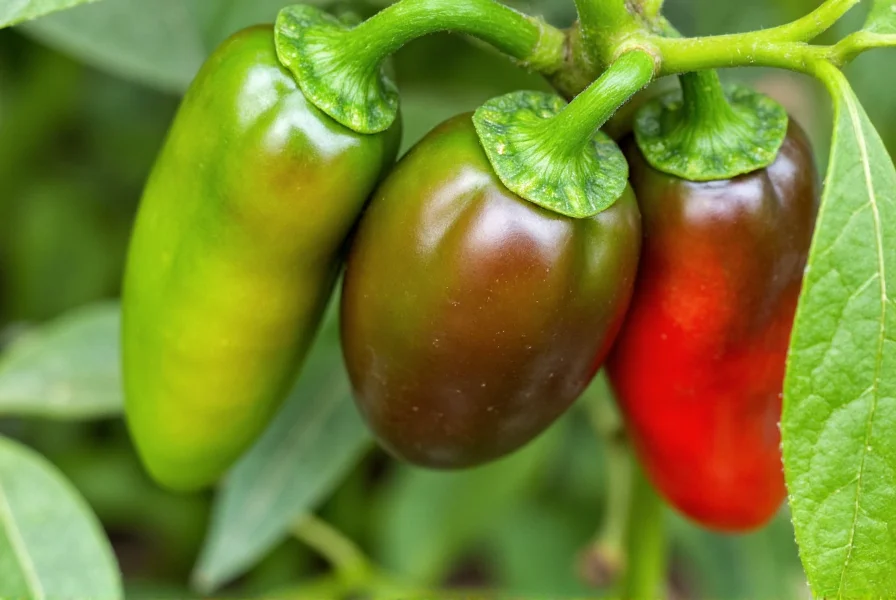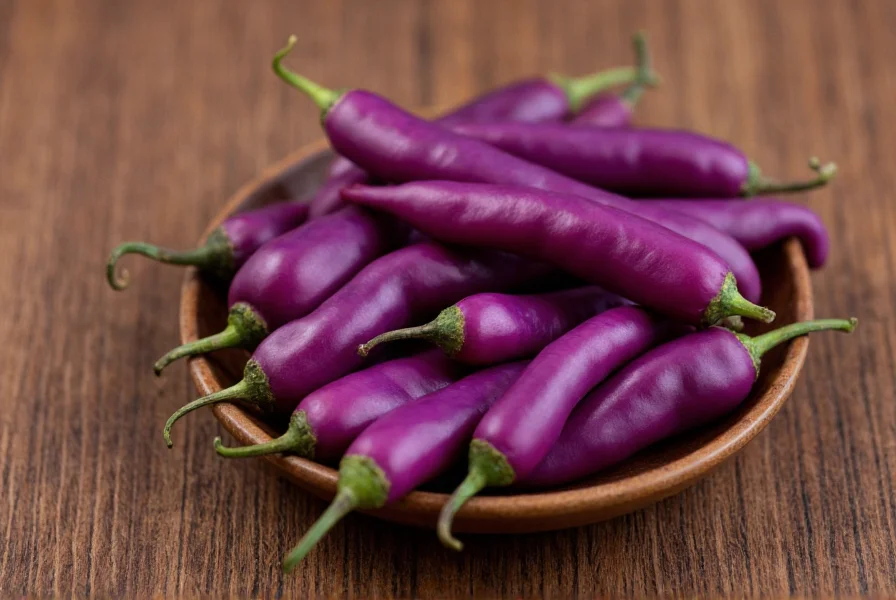Many gardeners and spice enthusiasts encounter confusion about purple cayenne pepper, often wondering if it's a special variety with unique properties. The reality is straightforward: authentic cayenne peppers don't naturally mature to purple. This misconception typically stems from either transitional growth stages of regular cayenne peppers or mislabeled purple pepper varieties being marketed as 'purple cayenne.'
Understanding Pepper Color Development
Pepper color transformation follows a biological process tied to chlorophyll breakdown and carotenoid development. When people ask why is my cayenne pepper purple, they're usually observing one of two phenomena:
- Transitional coloring - Some cayenne varieties develop temporary purple streaks or hues as they transition from green to their mature red color, particularly when exposed to significant temperature fluctuations
- Misidentification - Gardeners often mistake other purple pepper varieties like Purple Beauty, Purple Cayenne (a misnomer), or Black Hungarian peppers for true cayenne
| Pepper Type | Typical Color Progression | Heat Level (Scoville) | True Cayenne? |
|---|---|---|---|
| Standard Cayenne | Green → Yellow/Orange → Bright Red | 30,000-50,000 | Yes |
| "Purple Cayenne" (misnomer) | Green → Purple → Red | 30,000-50,000 | No (usually Purple Beauty) |
| Purple Beauty | Green → Deep Purple → Red | 5,000-10,000 | No |
| Black Hungarian | Green → Black/Purple → Red | 5,000-10,000 | No |
Cayenne Pepper Basics: What Defines a True Cayenne
True cayenne peppers belong to the Capsicum annuum species and have specific characteristics that distinguish them from other chili varieties:
- Long, slender shape (typically 2-5 inches long)
- Thin walls ideal for drying and powder production
- Consistent heat level between 30,000-50,000 Scoville units
- Natural color progression from green to yellow/orange to bright red
When gardeners search for growing purple cayenne peppers, they're often seeking varieties that maintain purple coloration. However, no authentic cayenne cultivar keeps purple as its mature color. The purple coloring in some plants represents an intermediate stage before the pepper develops its characteristic red hue.

Purple Pepper Varieties vs. True Cayenne
The confusion around purple cayenne pepper benefits often stems from marketing that blends different pepper types. Several purple pepper varieties get incorrectly labeled as 'cayenne':
Purple Beauty Peppers
These mild peppers (5,000-10,000 Scoville) develop striking purple coloration before turning red. Though sometimes sold as 'purple cayenne,' they lack the heat and slender shape of true cayenne peppers.
Black Hungarian Peppers
These heirloom peppers develop dark purple/black coloration before ripening to red. With moderate heat (5,000-10,000 Scoville), they're frequently mistaken for a cayenne variety despite significant botanical differences.
Transitional Coloration in Some Cayenne Varieties
Certain cayenne cultivars like 'Purple Cayenne' (a misnomer) may show purple streaks during maturation, particularly when exposed to cooler temperatures. This temporary coloring doesn't indicate a distinct variety but rather a growth stage.

Growing Peppers: Understanding Color Changes
If you're wondering why is my cayenne pepper purple, several environmental factors influence pepper color development:
- Temperature fluctuations - Cool nights can trigger anthocyanin production, causing temporary purple pigmentation
- Sun exposure - Uneven sunlight may create purple streaking on developing peppers
- Nutrient levels - Phosphorus deficiency sometimes causes purple discoloration in plants
- Genetic variation - Some cayenne strains naturally show more pronounced transitional coloring
These color variations don't affect the pepper's heat level or nutritional profile. Whether your cayenne shows purple hues during growth or matures directly to red, the capsaicin content (which determines heat) remains consistent for that variety.
Culinary Considerations for Peppers at Different Stages
Peppers harvested at different color stages offer varying flavor profiles, regardless of the purple cayenne pepper benefits claims you might encounter:
- Green stage - More vegetal, slightly bitter flavor; lower capsaicin content
- Transitional (purple/colored) stage - Developing sweetness with increasing heat
- Mature red stage - Fully developed sweetness with maximum capsaicin content
True cayenne peppers reach their optimal heat and flavor when fully matured to red. Harvesting them during purple transitional stages yields milder peppers suitable for different culinary applications.
Addressing Common Misconceptions
The term purple cayenne pepper creates confusion that leads to several persistent myths:
- Myth: Purple cayenne is a special variety with unique health benefits
Fact: No scientific evidence supports enhanced benefits from purple-hued cayenne peppers compared to standard red cayenne - Myth: Purple cayenne peppers are hotter than regular cayenne
Fact: Heat levels depend on variety and growing conditions, not temporary coloration - Myth: Purple cayenne is a rare heirloom variety
Fact: No authentic heirloom cayenne variety maintains purple as its mature color
When researching are purple cayenne peppers hotter, remember that temporary purple coloring doesn't correlate with increased capsaicin production. Heat levels depend primarily on genetics and environmental stressors during growth.
Practical Guidance for Gardeners and Cooks
Whether you're growing peppers or selecting them for culinary use, understanding these distinctions helps avoid confusion:
- Examine the plant characteristics, not just color, to identify true cayenne varieties
- Don't expect purple peppers labeled as 'cayenne' to deliver authentic cayenne heat or flavor
- Harvest cayenne peppers at their red maturity stage for traditional cayenne flavor and heat
- Embrace transitional color stages as part of the natural growth process, not a distinct variety











 浙公网安备
33010002000092号
浙公网安备
33010002000092号 浙B2-20120091-4
浙B2-20120091-4